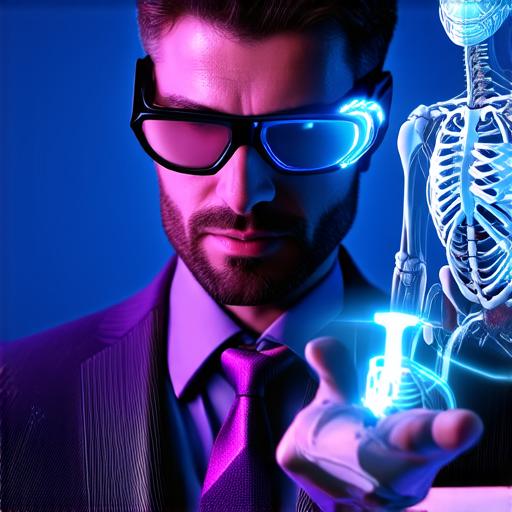Introduction
Augmented reality (AR) is a rapidly growing technology that has the potential to transform the way we interact with the world around us. AR allows us to overlay digital information onto real-world environments, creating an immersive and interactive experience for users. In this article, we will explore the various applications of augmented reality and their benefits to society.
Applications of Augmented Reality
Healthcare
Augmented reality has revolutionized the field of healthcare by providing doctors and patients with a new level of precision and accuracy in medical procedures. AR technology can be used to overlay digital information onto a patient’s body, allowing doctors to perform complex surgeries with greater precision and accuracy. In addition, AR can also be used for remote consultations, where patients can receive medical advice from healthcare professionals without having to leave their homes.
Education
AR technology has the potential to revolutionize the way we teach and learn. With AR, students can interact with digital objects in a more immersive and engaging way, making learning more fun and interactive. For example, AR can be used to create virtual field trips, where students can explore different parts of the world without leaving their classrooms. In addition, AR can also be used for language learning, where students can practice speaking and listening skills in a virtual environment.
Retail
AR technology has transformed the retail industry by providing customers with a more interactive and engaging shopping experience. With AR, customers can try on clothes virtually before buying them, reducing the need for physical trials. In addition, AR can also be used to create virtual product displays, where customers can see products in a more immersive way. This has led to increased customer engagement and sales for retailers.
Manufacturing
AR technology has revolutionized the manufacturing industry by providing workers with a new level of precision and accuracy in their work. With AR, workers can overlay digital information onto physical objects, allowing them to make more accurate measurements and reduce errors. In addition, AR can also be used for remote maintenance, where technicians can perform repairs on machines without having to physically be there.
Gaming
AR technology has transformed the gaming industry by providing players with a more immersive and interactive experience. With AR, players can interact with digital objects in their physical environment, creating a more engaging and immersive gameplay experience. In addition, AR can also be used for multiplayer games, where players can interact with each other in a virtual environment.
Tourism
AR technology has transformed the tourism industry by providing visitors with a more immersive and interactive way to explore different parts of the world. With AR, visitors can see digital information about historical sites and landmarks, allowing them to learn more about the history and culture of the area they are visiting. In addition, AR can also be used for virtual tours, where visitors can explore different parts of the world without having to physically be there.
Benefits of Augmented Reality

Increased Engagement
Augmented reality provides users with a more immersive and interactive experience, leading to increased engagement and interest in the technology. This has led to higher adoption rates and increased usage of AR applications across different industries.
Improved Accuracy
AR technology provides users with a new level of precision and accuracy in their work, leading to reduced errors and improved quality of work. This is particularly beneficial in industries such as healthcare and manufacturing, where accuracy is critical.
Cost-effective
AR technology can be cost-effective in the long run, as it reduces the need for physical trials and errors. In addition, AR can also reduce the need for expensive equipment and tools, leading to cost savings for businesses.
Accessibility
AR technology is accessible to people of all ages and abilities, making it a versatile tool that can be used in different contexts. For example, AR can be used for language learning, where students with disabilities can practice speaking and listening skills in a virtual environment.
Real-life Examples
IKEA Place
IKEA Place is an augmented reality app that allows users to see how different pieces of furniture would look in their home before buying them. The app has been downloaded over 100 million times and has helped IKEA increase sales by 25%.
